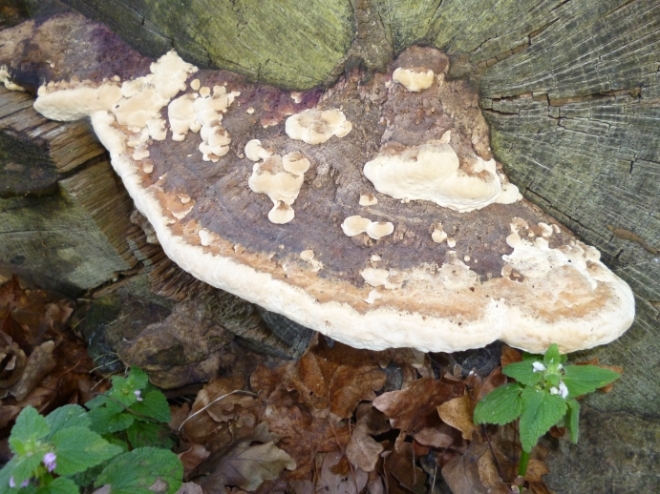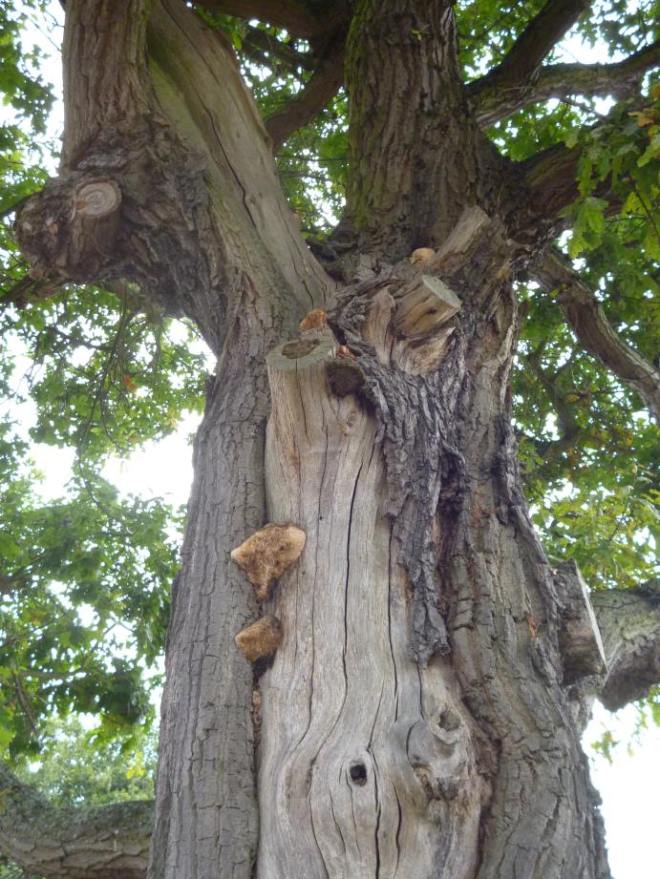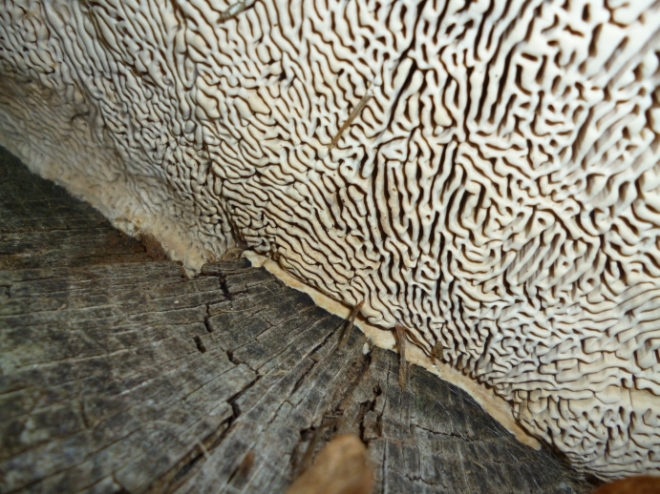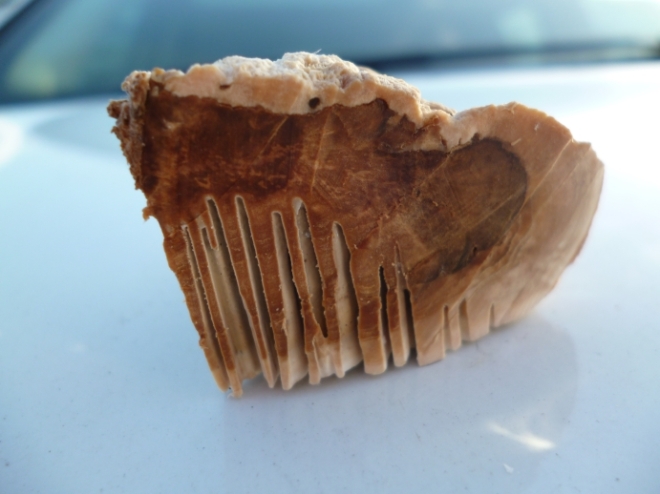For this spotlight on wood-decay fungi, I thought I would turn attention towards the oak maze-gill. This fungus is rather attractive, and certainly variable in its morphology – I have seen it as a large bracket and also as a tiny ‘hoof-shaped’ sporophore (in the former, it is certainly much nicer on the eye).
Occurrence of Daedalea quercina is predominantly on Quercus spp. (oaks), though Fagus spp. (beech) and Castanea sativa (sweet chestnut) have also been observed to act as hosts for this fungus at times. Curiously, in the USA, coniferous species have been observed as hosts, though I am unsure of whether there is much evidence of this in any other parts of its natural range.
Colonisation occurs via dead attached branches, damaged stems, fallen wood, or a stump, and is limited largely to the heartwood – despite this, sapwood colonisation can occur, though usually the oak maze-gill can be seen to have colonised dead sections of its host (or an entire dead structure).

With regards to its mode of decay, it is a slow-acting but intense brown rot. Such rot causes the wood to become brittle (as the cellulose is removed), thereby leaving the structure prone to brittcle fractring during loading events. As it is typically found upon (standing or fallen) deadwood however, its significance is ultimately rather limited. Issues can however arise from decay of dead branches within the crown, particularly if they are large, or where colonisation of an entire living or dead host can be observed – in such cases, cavities may form throughout the main stem and leave the structure prone to failure. Where colonising Taxodium distichum, Daedalea quercina presence has in fact been observed to lead to exceptionally severe internal decay.

However, rarely is presence of Daedalea quercina grounds for removal, though dead material within the crown should be removed if the target area is significant. The condition of standing hosts with extensive decay should be routinely monitored, and made safe where appropriate (via monolithing, felling, or otherwise).
Suggested reading list:
Baietto, M. & Wilson, A. (2010) Relative in vitro wood decay resistance of sapwood from landscape trees of southern temperate regions. HortScience. 45 (3). p401-408.
Glaeser, J. & Smith, K. (2010) Decay fungi of oaks and associated hardwoods for western arborists. In Winter Arborist, Winter 2010. p32-46.
Lonsdale, D. (1999) Principles of Tree Hazard Assessment and Management (Research for Amenity Trees 7). London: HMSO.
Luley, C. (2005) Wood Decay Fungi Common to Urban Living Trees in the Northeast and Central United States. USA: Urban Forestry LLC.
Mattheck C., Bethge, K., & Weber, K. (2015) The Body Language of Trees: Encyclopedia of Visual Tree Assessment. Germany: Karlsruhe Institute of Technology.
Schmidt, O. (2006) Wood and Tree Fungi: Biology, Damage, Protection, and Use. Germany: Springer.
Sunhede, S. & Vasiliauskas, R. (1996) Wood and bark inhabiting fungi on oak in Lithuania. Baltic Forestry. 2 (2). p23-27.
Weber, K. & Mattheck, C. (2003) Manual of Wood Decays in Trees. UK: The Arboricultural Association.




